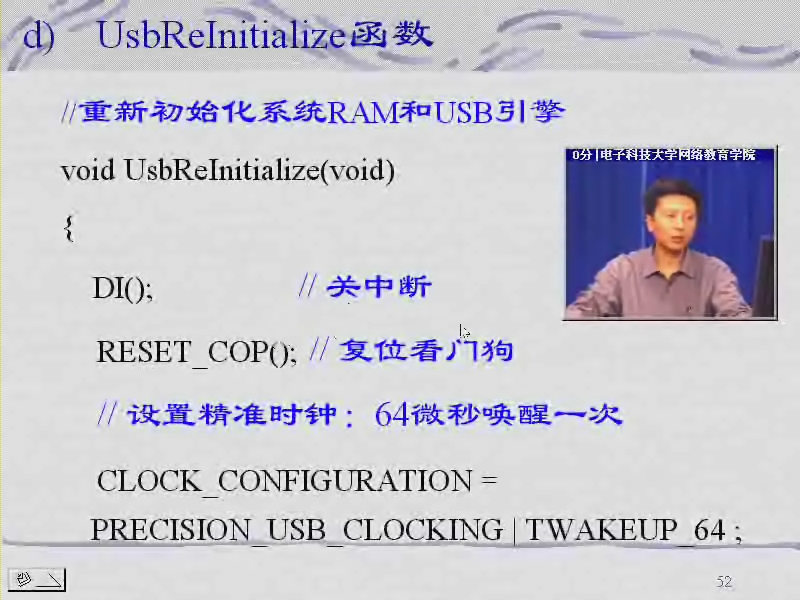在驅(qū)動(dòng)模塊初始化函數(shù)中實(shí)現(xiàn)設(shè)備節(jié)點(diǎn)的自動(dòng)創(chuàng)建
我們?cè)趧傞_(kāi)始寫Linux設(shè)備驅(qū)動(dòng)程序的時(shí)候,很多時(shí)候都是利用mknod命令手動(dòng)創(chuàng)建設(shè)備節(jié)點(diǎn),實(shí)際上Linux內(nèi)核為我們提供了一組函數(shù),可以用來(lái)在模塊加載的時(shí)候自動(dòng)在/dev目錄下創(chuàng)建相應(yīng)設(shè)備節(jié)點(diǎn),并在卸載模塊時(shí)刪除該節(jié)點(diǎn),當(dāng)然前提條件是用戶空間移植了udev。
本文引用地址:http://www.104case.com/article/148609.htm內(nèi)核中定義了STruct class結(jié)構(gòu)體,顧名思義,一個(gè)struct class結(jié)構(gòu)體類型變量對(duì)應(yīng)一個(gè)類,內(nèi)核同時(shí)提供了class_create(…)函數(shù),可以用它來(lái)創(chuàng)建一個(gè)類,這個(gè)類存放于sysfs下面,一旦創(chuàng)建好了這個(gè)類,再調(diào)用device_create(…)函數(shù)來(lái)在/dev目錄下創(chuàng)建相應(yīng)的設(shè)備節(jié)點(diǎn)。這樣,加載模塊的時(shí)候,用戶空間中的udev會(huì)自動(dòng)響應(yīng)device_create(…)函數(shù),去/sysfs下尋找對(duì)應(yīng)的類從而創(chuàng)建設(shè)備節(jié)點(diǎn)。
注意,在2.6較早的內(nèi)核版本中,device_create(…)函數(shù)名稱不同,是class_device_create(…),所以在新的內(nèi)核中編譯以前的模塊程序有時(shí)會(huì)報(bào)錯(cuò),就是因?yàn)楹瘮?shù)名稱不同,而且里面的參數(shù)設(shè)置也有一些變化。
struct class和device_create(…) 以及device_create(…)都定義在/include/linux/device.h中,使用的時(shí)候一定要包含這個(gè)頭文件,否則編譯器會(huì)報(bào)錯(cuò)。
在2.6.26.6內(nèi)核版本中,struct class定義在頭文件include/linux/device.h中:
/*
* device classes
*/
struct class {
coNSt char *name;
struct module *owner;
nbsp;struct kset subsys;
struct list_head devices;
struct list_head interfaces;
struct kset class_dirs;
struct semaphore sem; /* locks children, devices, interfaces */
struct class_attribute *class_attrs;
struct device_attribute *dev_attrs;
int (*dev_uevent)(struct device *dev, struct kobj_uevent_env *env);
void (*class_release)(struct class *class);
void (*dev_release)(struct device *dev);
int (*suspend)(struct device *dev, pm_message_t state);
int (*resume)(struct device *dev);
};
class_create(…)在/drivers/base/class.c中實(shí)現(xiàn):
/**
* class_create - create a struct class structure
* @owner: pointer to the module that is to own this struct class
* @nAME: pointer to a string for the name of this class.
*
* This is used to create a struct class pointer that can then be used
* in calls to device_create().
*
* Note, the pointer created here is to be destroyed when finished by
* making a call to class_destroy().
*/
struct class *class_create(struct module *owner, cONst char *name)
{
struct class *cls;
int retval;
cls = kzalloc(sizeof(*cls), GFP_KERNEL);
if (!cls) {
retval = -ENOMEM;
goto error;
}
cls->name = name;
cls->owner = owner;
cls->class_release = class_create_release;
retval = class_register(cls);
if (retval)
goto Error;
return cls;
error:
kfree(cls);
return ERR_PTR(retval);
}
第一個(gè)參數(shù)指定類的所有者是哪個(gè)模塊,第二個(gè)參數(shù)指定類名。
在class.c中,還定義了class_destroy(…)函數(shù),用于在模塊卸載時(shí)刪除類。
device_create(…)函數(shù)在/drivers/base/core.c中實(shí)現(xiàn):
/**
* device_create - creates a device and registers it with sysfs
* @class: pointer to the struct class that this device should be registered to
* @parent: pointer to the parent struct device of this new device, if any
* @devt: the dev_t for the char device to be added
* @fmt: string for the device's name
*
* This funcTIon can be used by char device classes. A struct device
* will be created in sysfs, registered to the specified class.
*
* A dev file will be created, showing the dev_t for the device, if
* the dev_t is not 0,0.
* If a pointer to a parent struct device is passed in, the newly created
* struct device will be a child of that device in sysfs.
* The pointer to the struct device will be returned from the call.
* Any further sysfs files that might be required can be created using this
* pointer.
*
* Note: the struct class passed to this function must have previously
* been created with a call to class_create().
*/
struct device *device_create(struct class *class, struct device *parent,
dev_t devt, const char *fmt, ...)
{
va_list vargs;
struct device *dev;
va_start(vargs, fmt);
dev = device_create_vargs(class, parent, devt, NULL, fmt, vargs);
va_end(vargs);
return dev;
}
第一個(gè)參數(shù)指定所要?jiǎng)?chuàng)建的設(shè)備所從屬的類,第二個(gè)參數(shù)是這個(gè)設(shè)備的父設(shè)備,如果沒(méi)有就指定為NULL,第三個(gè)參數(shù)是設(shè)備號(hào),第四個(gè)參數(shù)是設(shè)備名稱,第五個(gè)參數(shù)是從設(shè)備號(hào)。
下面以一個(gè)簡(jiǎn)單字符設(shè)備驅(qū)動(dòng)來(lái)展示如何使用這幾個(gè)函數(shù)
#include
#include
#include
#include
#include
#include
MODULE_LICENSE (GPL);
int hello_major = 555;
int hello_minor = 0;
int number_of_devices = 1;
struct cdev cdev;
dev_t dev = 0;
struct file_operations hello_fops = {
.owner = THIS_MODULE
};
static void char_reg_setup_cdev (void)
{
int error, devno = MKDEV (hello_major, hello_minor);
cdev_init (cdev, hello_fops);
cdev.owner = THIS_MODULE;
cdev.ops = hello_fops;
error = cdev_add (cdev, devno , 1);
if (error)
printk (KERN_NOTICE Error %d adding char_reg_setup_cdev, error);
}
struct class *my_class;
static int __init hello_2_init (void)
{
int result;
dev = MKDEV (hello_major, hello_minor);
result = register_chrdev_region (dev, number_of_devices, hello);
if (result0) {
printk (KERN_WARNING hello: can't get major number %dn, hello_major);
return result;
}
char_reg_setup_cdev ();
/* create your own class under /sysfs */
my_class = class_create(THIS_MODULE, my_class);
if(IS_ERR(my_class))
{
printk(Err: failed in creating class.n);
return -1;
}
/* register your own device in sysfs, and this will cause udev to create corresponding device node */
device_create( my_class, NULL, MKDEV(hello_major, 0), hello %d, 0 );
printk (KERN_INFO Registered character drivern);
return 0;
}
static void __exit hello_2_exit (void)
{
dev_t devno = MKDEV (hello_major, hello_minor);
cdev_del (cdev);
device_destroy(my_class, MKDEV(adc_major, 0)); //delete device node under /dev
class_destroy(my_class); //delete class created by us
unregister_chrdev_region (devno, number_of_devices);
printk (KERN_INFO char driver cleaned upn);
}
module_init (hello_2_init);
module_exit (hello_2_exit);
這樣,模塊加載后,就能在/dev目錄下找到hello0這個(gè)設(shè)備節(jié)點(diǎn)了。










評(píng)論